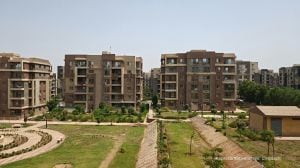A Silent Revolution
Twenty-five years ago,on November 15,1984,Silent Valley in Kerala was declared a national park after a sustained campaign against the construction of a dam that would have submerged parts of it. The Sunday Express recounts the struggle and the success of one of Indias earliest ecological movements....
Its almost undisturbed forests are home to many endemic and endangered species,but its the lion-tailed macaque that has come to symbolise the Silent Valley in Keralas Palakkad district. Two decades ago,the endangered macaque became the Silent Valleys rallying cry that brought together environmentalists,students,teachers and writers to stop the Kerala government from building a dam that would have submerged its forests and fragmented the primates habitat.
The Kerala State Electricity Board had proposed a dam over the Kunthipuzha River as early as in 1958 and work on the project began in 1973,after it got the Planning Commissions nod. In the following years,the opposition to the 240-MW hydroelectric projectthat would have submerged seven-sq-km along the Western Ghatsgrew stronger.
Luckily for the dissenters,then prime minister Indira Gandhi had developed a keen interest in environmental matters after attending the UN Conference on environment in Stockholm in 1972. She later formed the National Committee for Environmental Planning and Co-ordination,which was asked to scout for places in the Western Ghats which were suitable for conservation and could be converted into national parks.
In 1976,the committee first went to Kudremukh region in Karnataka but returned saying the area was ravaged by iron ore mining. The team then visited the 90-sq-km Silent Valleynamed so because of the absence of the cicada whose song usually rings across forestsand found it ideal for conservation. It had no tribal habitats,no plantations and minimum human intervention.
It was from the report of the committee that I came to know about the Silent Valley and the necessity to protect it from human intervention, says noted environmentalist Dr M.K. Prasad,who,under the banner of the Left-backed Kerala Sasthra Sahitya Parishad (KSSP),had led the campaign against the dam in Silent Valley. Prasad understood the need for protecting the Silent Valleys evergreen and shola forests and its grasslands. The forests that have evolved over 50 million years are ecological islands and conservationists made the case that they needed to remain so.
Meanwhile,V.S. Vijayan,a young scientist at the Kerala Forest Research Institute (KFRI),a government body founded in 1975 in Thrissur,began his study on the Silent Valley. Dr M.K. Prasad told me about the proposed project and asked me to conduct a study and submit a report, says Vijayan,now chairman of the state bio-diversity board.
As the report was nearing completion in 1977,the states industries minister P.K. Vasudevan Nair rushed to Delhi to get clearance for the power project. Sensing danger,I rushed a telegram to a joint secretary asking him to wait for the KFRI report. The next day,when the issue came up before a crucial meeting,the official delivered my message, says Vijayan.
In his report,Vijayan wrote that the Silent Valley was the largest chunk of continuous evergreen forest without any human interference in the country and that the environmental impact of the hydel project would be grave. After submitting his report,Vijayan quit KFRI and joined ornithologist Dr Salim Ali.
Salim Ali had travelled extensively in the Silent Valley,identifying over a dozen endangered species of birds and his voice lent substantial weight to the campaign to save Silent Valley.
THE Silent Valley issue,says Prasad,was first raised during a meeting of a nature club set up by the Zoology Department of the Government College in Payyannur,Kannur,in 1978. The flame lighted at Payyannur soon spread to North Kerala and the Silent Valley Protection Committee was set up in Kozhikode.
The Kerala Sasthra Sahitya Parishad was divided over the issue. However,after conducting a techno-economic,socio-political study on the power project,the KSSP plunged into the campaign (for the forest). Soon,the issue became a full-blown debate among writers,intellectuals and college students in Kerala, says Prasad.
From then on,the movement kept growing. Save Silent Valley clubs came up in many cities across India and support also came in from the Botanical Survey of India,the Zoological Survey of India,the International Union for Conservation of Nature and the WWF. The IUCN,in fact,even passed a resolution urging the Indian government to protect the Valley.
The movement heralded the beginning of public awareness on environment and even triggered an intellectual debate in Kerala,particularly among Left-leaning intellectuals who were divided over the issue. In fact,the movement was responsible for the passing of the Forest Conservation Act in 1980 that restricted the use of forest land for any non-forest use.
Though the Silent Valley campaign was seen as a peoples movement,well-known green activist C.R. Neelakandan says it was a campaign that did not have media support. As an engineering student,I had gone to Silent Valley during the height of the protest against the project. The visit changed me forever, remembers Neelakandan,who now leads several environmental movements in Kerala.
As the conservationists stepped up their campaign and as the state government began exerting pressure on the Centre to get clearance for the power project,Prime Minister Indira Gandhi appointed an expert committee in 1980 to look into the issue. The committee,headed by M.G.K. Menon,reported that the project would do irreparable damage to the forests and in 1984,Indira Gandhi scrapped the project. And on November 15,days after her assassination,her successor Rajiv Gandhi declared Silent Valley a national park. The present LDF government announced a buffer zone of 148 sq km along the core area.
- 01
- 02
- 03
- 04
- 05































